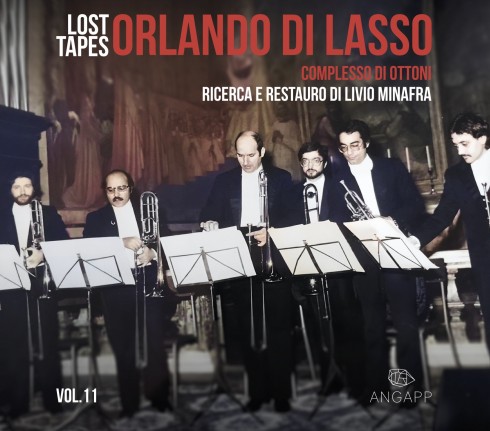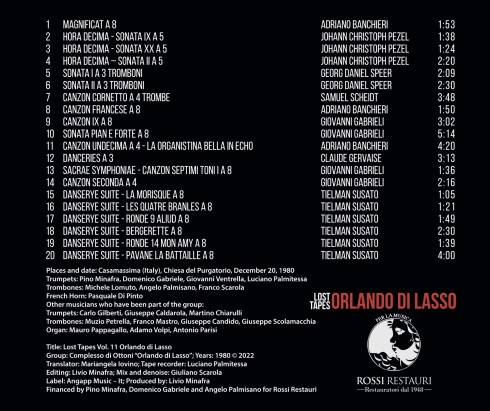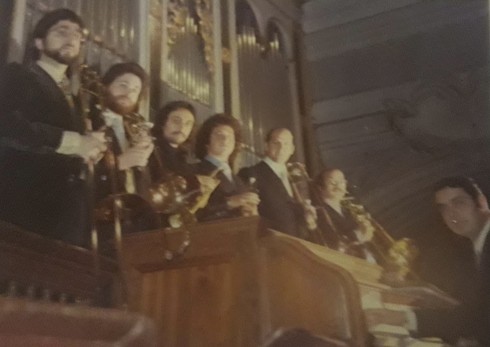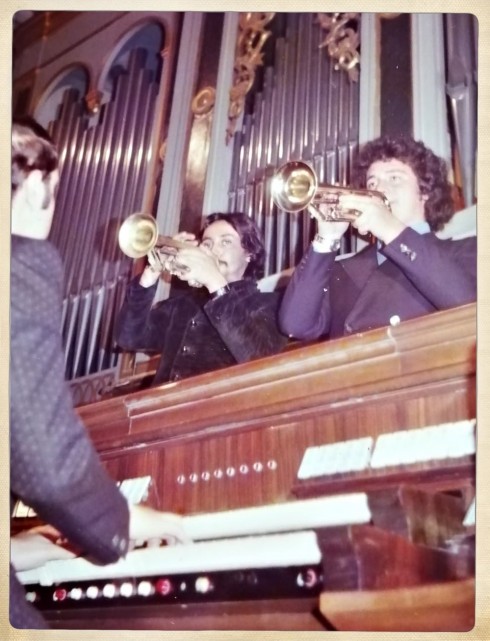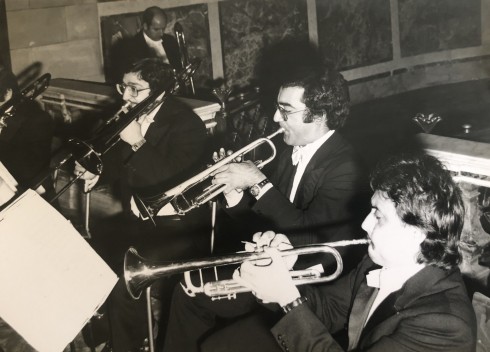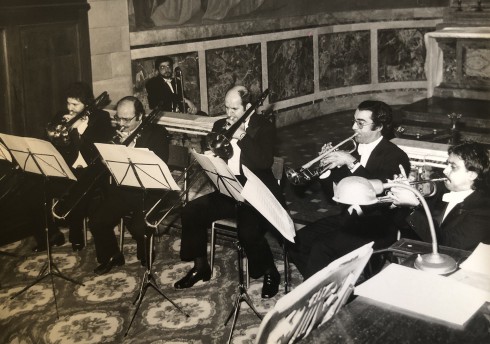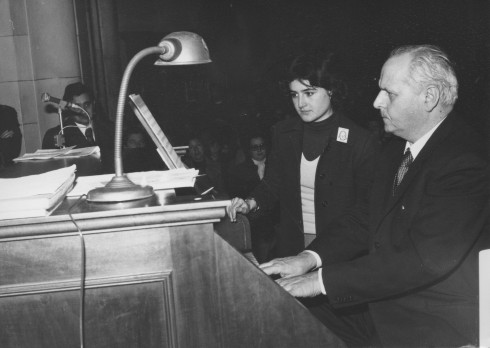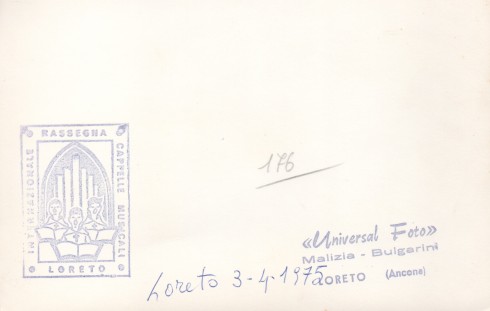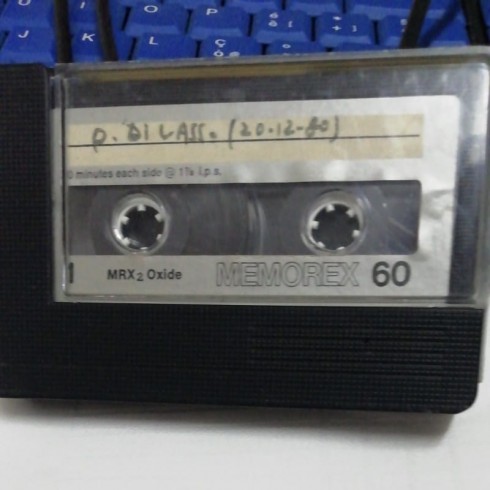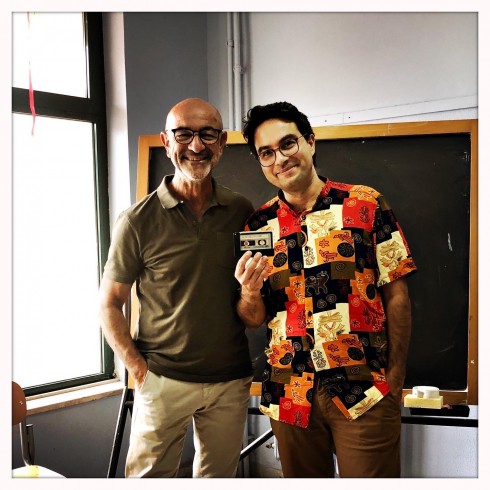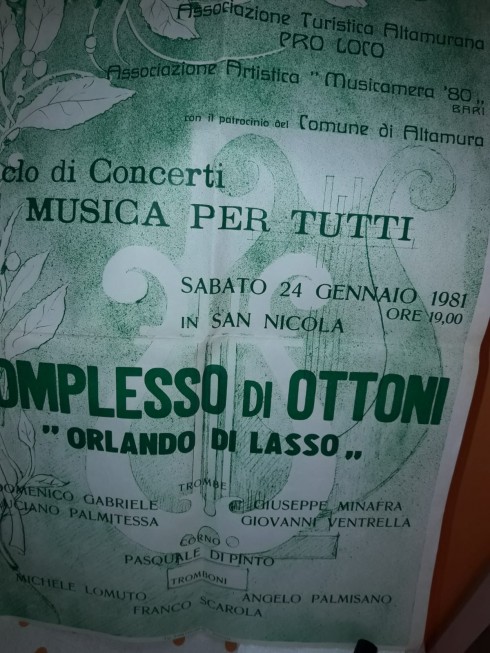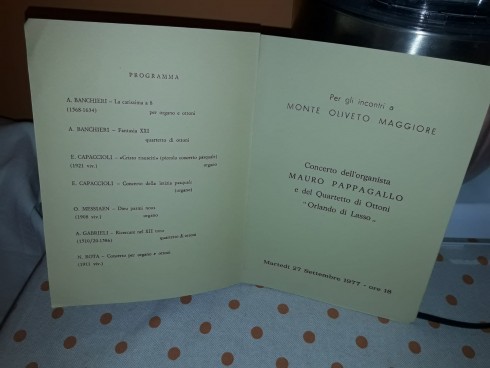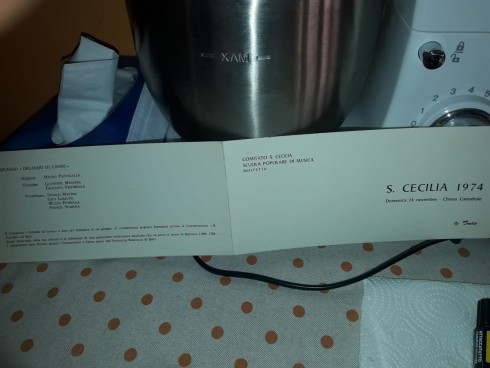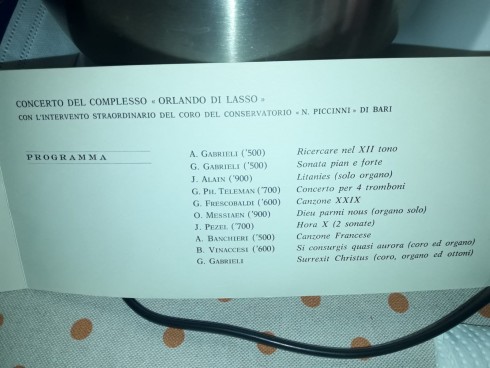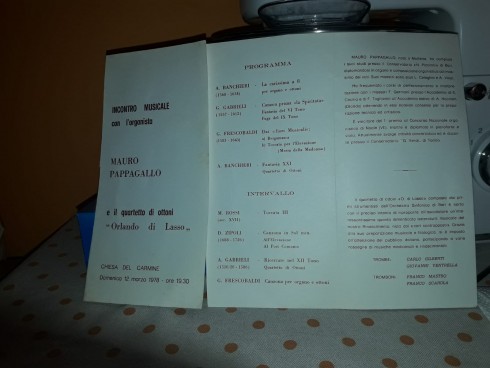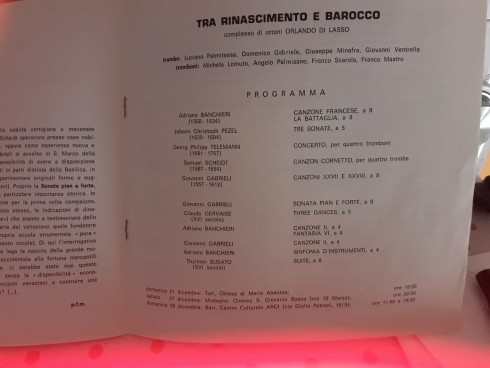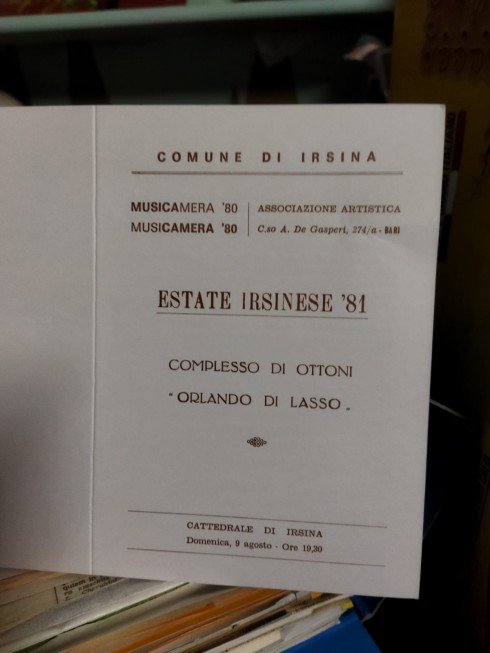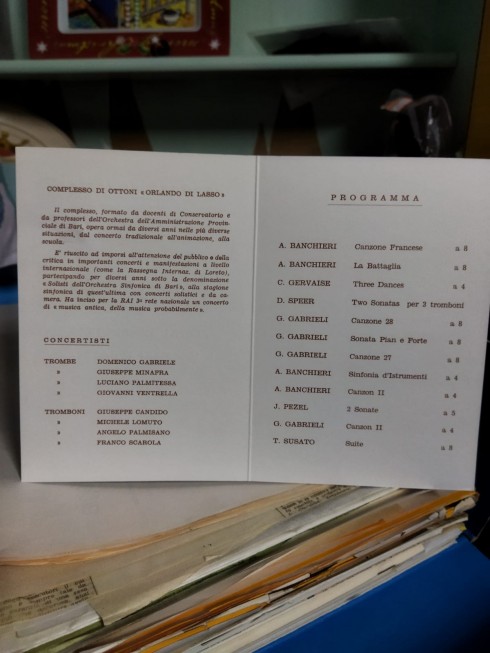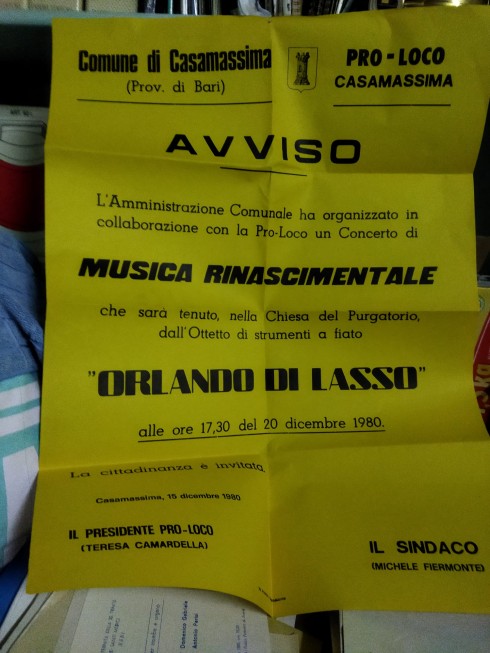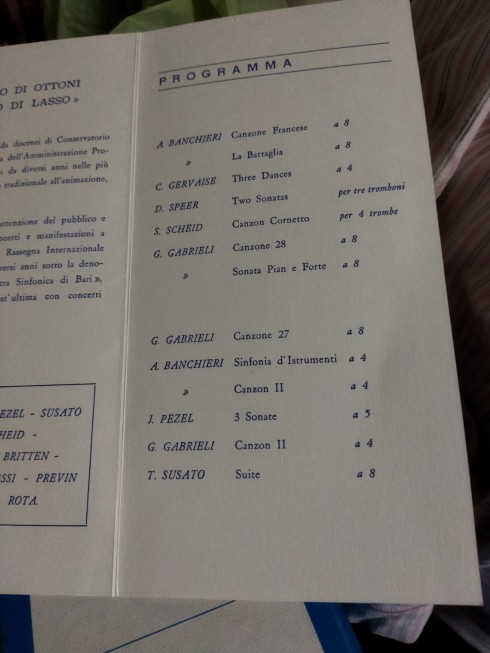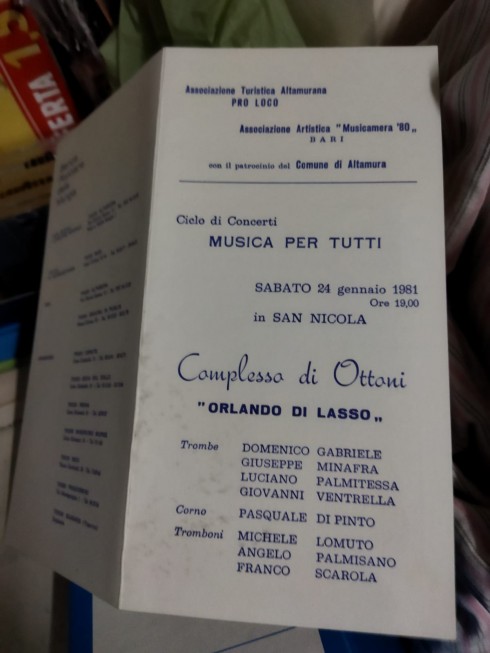Title: Lost Tapes Vol. 11 Complesso di Ottoni “Orlando di Lasso”
Group: Complesso di Ottoni “Orlando di Lasso”
Years: 1980 © 2022
Graphic: 3Heads Agency
Text: Livio Minafra
Recorder: Luciano Palmitessa
Discover, digitalization, sound track selection, editing: Livio Minafra
Mastering and restoration sound engineer: Giuliano Scarola
Label: Angapp Music – It
Produced by: Livio Minafra
Financed by: Pino Minafra, Angelo Palmisano together with Rossi Restauri, Mimmo Gabrieli and Franco Scarola
“Very little was heard of ancient music and it was definitely not yet in fashion. In short, a mystery.” This is how the musician Bruno Tommaso sums up the situation on Rome in the late 1960s around Early Music. For example, in those years the Musica Insieme Group was founded, which, led by Antenore Tecardi, not only searched the ancient libraries for old scores from about 3/400 years earlier, but also recovered instruments of the time to retrieve the timbre of that special literature as well. But how was that music played? Manuals and treatises of the time partly indicated how to approach that music and how to enrich it with embellishments, but nothing more. On the one hand, a taste for reliving that historical musical period was emerging throughout Italy; on the other hand, in the music conservatories, people were beginning to talk about didactics and practice of Early Music, namely that period running between the Middle Ages, the Renaissance and the Baroque.
In the South Italy, while in Matera organist Luigi Celeghin was putting together the “Gabrieli” brass Quartet, on June 25, 1974, with a concert at the Abeliano Theater in Bari, the “Orlando di Lasso” quintet was born, which, as the June 30 review in the Gazzetta del Mezzogiorno points out, “explicitly aims at the recovery and ‘revival’ of the sound of brass instruments.” The unnamed journalist adds, “Hence their prevailing interest in Baroque and Renaissance music, but also their confidence in the expressive possibilities of the sound of the formation in contemporary music.” Thus Michele Lomuto, Pino Minafra, Giuseppe Caldarola (who months later would be succeeded by Giovanni Ventrella), Muzio Petrella and Franco Scarola gave body to the ensemble; it was Lomuto himself who identified the Flemish composer “Orlando di Lasso” as the name of the group. A few months later journalist Nicolà Sbisà did not hesitate to define the ensemble among the few in Europe dedicated to brass instruments. From this point of view the Niccolò Piccinni Conservatory of Music in Bari had been the cradle in which the Orlando di Lasso had taken root. All fresh graduates of the then united Trumpet and Trombone chair of Maestro Michele Valerio well thought out to set up a brass ensemble to investigate the repertoires of Giovanni and Andrea Gabrieli, Adriano Banchieri, Johann Christoph Pezel, Tielman Susato, Girolamo Frescobaldi and other composers who, beyond the examination of History of Music, initially turned out to be totally new to the ears and sight! And then one should not be surprised if Maestro Nino Rota himself, then director of the Conservatory, listening to them rehearse, thought of writing a composition specifically for them and Adamo Volpi (at the time Organ teacher at Piccinni): the Sonata for Brass and Organ, later published in 1976 by Zanibon Editions, whose first performance took place in Matera in March 1974 as Rota gave a copy of the composition to Celeghin and the Gabrieli Quartet. Instead Orlando di Lasso performed it for the first time on April 3, 1975, in Loreto, for the International Musical Chapel Festival with Adamo Volpi on the organ.
It must be said that over time the group, also to obtain the effect of the double chorus, had settled on the octet with new decisive inclusions like Domenico Gabriele on the trumpet (October 1974), Angelo Palmisano and Franco Mastro on trombones, but through the years many talented musicians come in succession, such as trumpeters Luciano Palmitessa, Carlo Gilberti, Martino Chiarulli or trombonists Giuseppe Candido and Giuseppe Scolamacchia or the horn player Pasquale Di Pinto. Furthermore, the band immediately opened to the sound of the organ, collaborating first with the organist Mauro Pappagallo and later with Antonio Parisi. Flourishing years of concerts followed and for about a decade the ensemble was a point of reference in Bari and Italy; then each went his own way, and the creative drive of the group ran out.
Michele Lomuto passed to contemporary music at the court of Luciano Berio, Pino Minafra devoted himself to experimental jazz, Franco Mastro moved into the newborn Symphony Orchestra of Bari, etc… And Everyone took their own path.
Today, thanks to the discovery of this unique cassette tape from 1980, for which we thank Luciano Palmitessa (among the performers of that the concert), we can dive back into what the ensemble was and see first-hand, for a moment, the enthusiasm of those mature and lucid guys who together, were writing a page of Italian instrumental music.
Livio Minafra, September 20, 2022
 English
English Italiano
Italiano